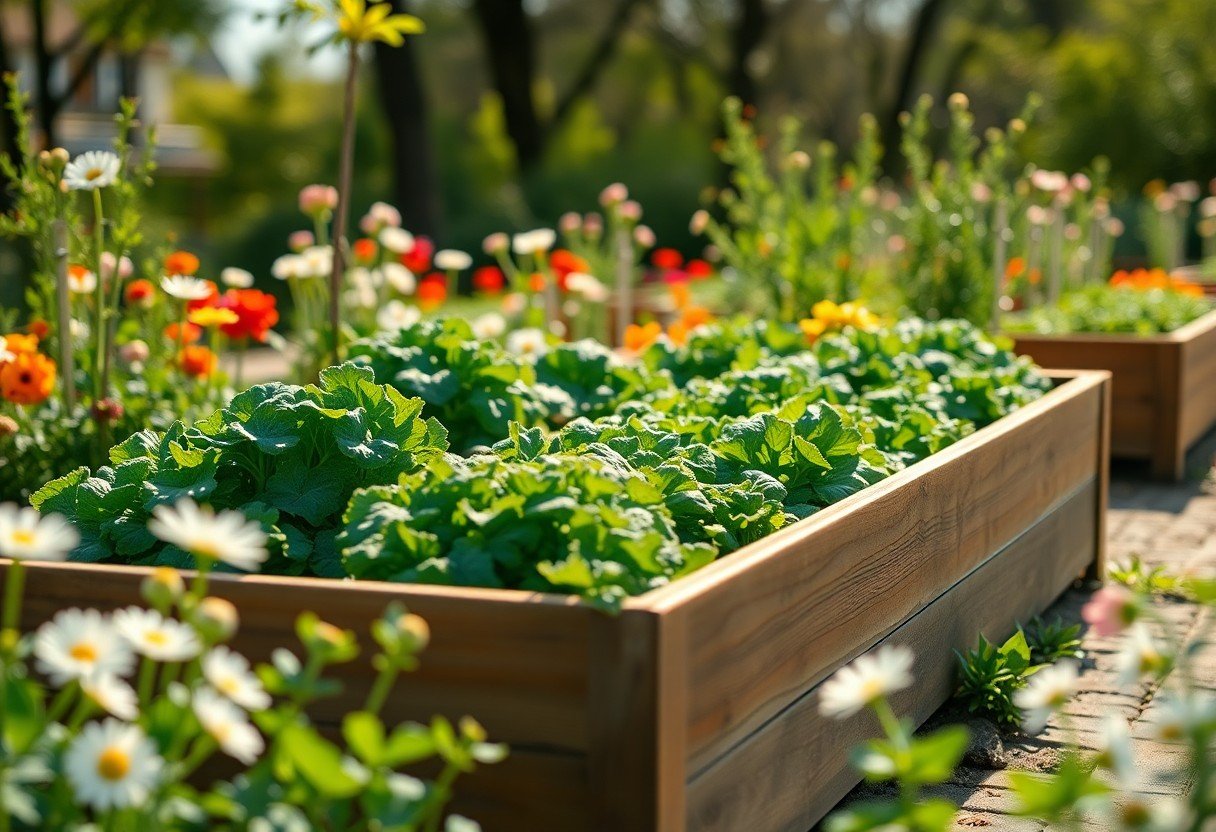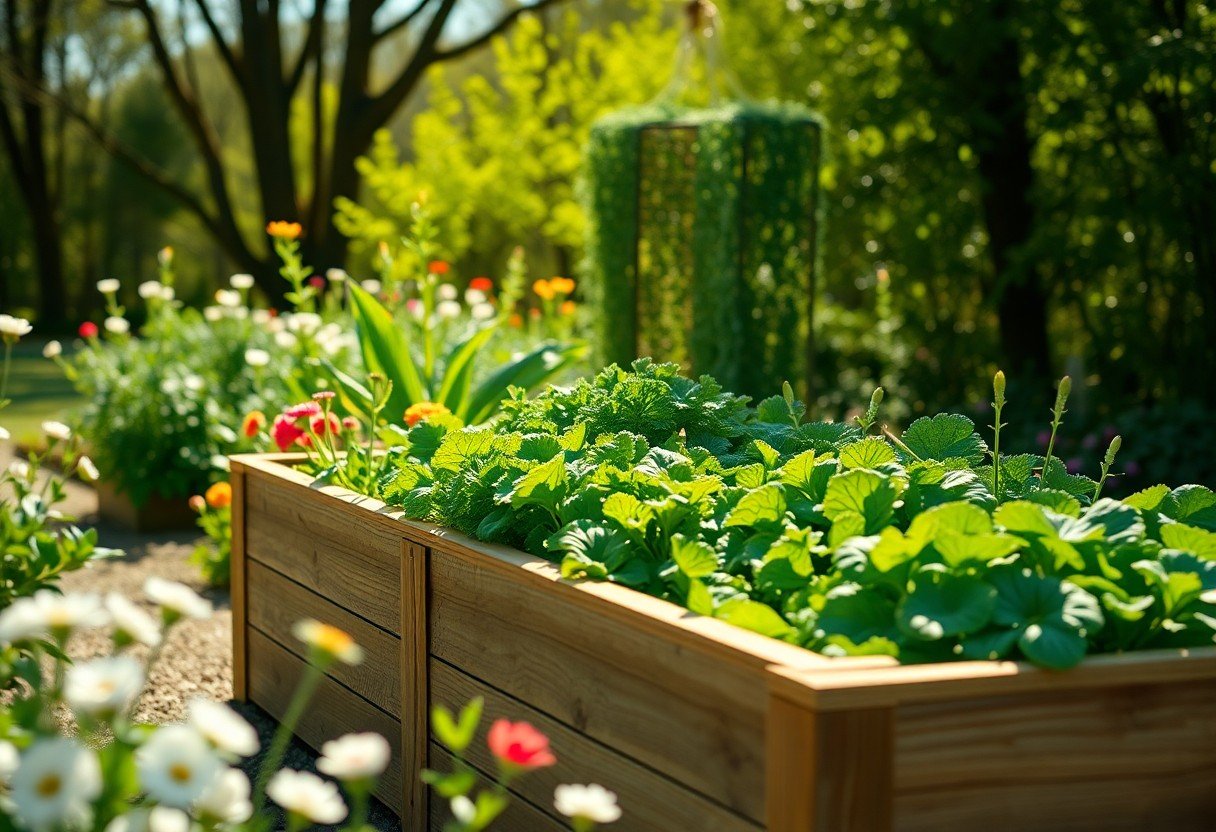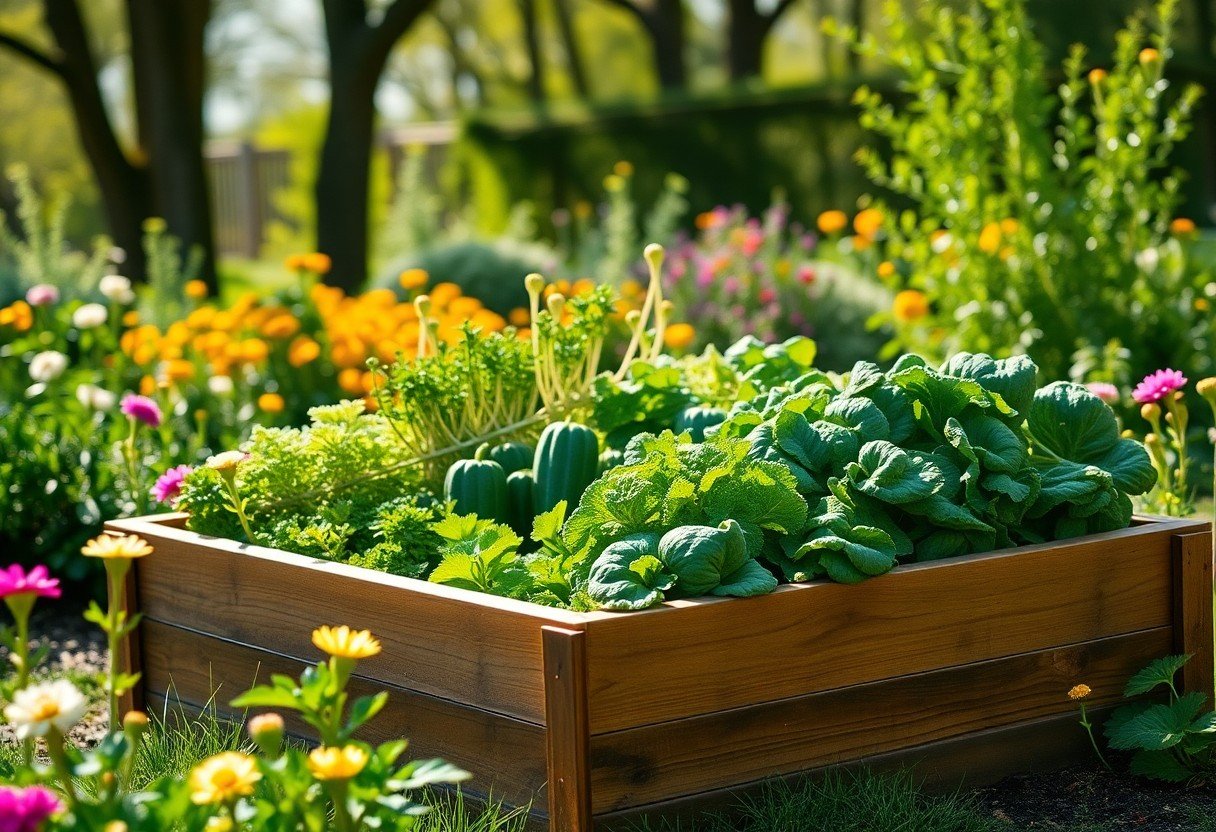Planning Your Raised Garden Beds
To create a thriving spring crop, planning is important. You need to consider several factors before building your raised garden beds. This includes determining the right size and location, as well as considering key factors for optimal growth.
Determining the Right Size and Location
Your garden’s size and location will depend on the space available and the amount of sunlight it receives. You should choose a spot that gets at least 6 hours of direct sunlight a day.
Considering Key Factors for Optimal Growth
Raised garden beds require careful consideration of several key factors, including:
- Soil quality
- Drainage
- Accessibility
You will be able to create an ideal environment for your plants. Knowing these factors will help you make informed decisions when designing your raised garden beds.Growth of your plants depends on many factors, including:
- Temperature
- Moisture
- Nutrient availability
You can control these factors in a raised garden bed, allowing you to create optimal growing conditions. Knowing these factors will help you to create a thriving and productive garden.Choosing the Right Materials
If you’re planning to create raised garden beds, selecting the right materials is crucial for a thriving spring crop. You’ll want to consider the durability and safety of the materials you choose.
Types of Wood and Their Durability
While choosing wood, you have several options, including:
- Cedar
- Cypress
- Pine
- Recycled wood
- Composite wood
After selecting your preferred wood type, you can compare their characteristics in the following table:
Wood Type Durability Cedar High Cypress Medium Pine Low Recycled wood Medium Composite wood High Alternatives to Traditional Wood Options
Now that you’ve considered traditional wood options, you may also want to explore alternative materials, such as metal, plastic, or stone, which can offer unique benefits and drawbacks.
Durability is a key factor when evaluating alternatives to traditional wood options. You should consider how well these materials will withstand the elements and support your spring crop. As you weigh your options, think about your budget, the style of your garden, and the level of maintenance you’re willing to commit to, and choose the material that best fits your needs.
Building Your Raised Garden Beds
Assuming you have gathered all the necessary materials, it’s time to start building your raised garden beds. You will need to construct the frame, add a bottom, and fill it with soil and compost.
Step-by-Step Instructions for Assembly
Even with a simple design, assembling your raised garden bed can be straightforward. The following
Assembly Guide
Step Action 1 Construct the frame 2 Add a bottom will help you get started.
Tips for Ensuring Stability and Drainage
- using durable materials
- adding a drainage system
. After you have completed these steps, your raised garden bed will be ready for planting.
Another important aspect to consider when building your raised garden bed is the type of materials you use. You can:
- use wood or metal for the frame
- add a layer of gravel for drainage
. After you have finished building your raised garden bed, you will be able to enjoy a thriving spring crop.
Preparing the Soil
Despite the excitement of starting your spring crop, you must first prepare your soil. You can learn more about preparing your raised garden bed by visiting how to set up a raised garden bed for spring guide.
Understanding the Importance of Soil Quality
Now that you’ve started preparing your raised garden bed, you need to understand that your soil’s quality will directly impact your crop’s health and productivity, so you should take the time to assess it.
How to Test and Amend Your Soil
While preparing your soil, you will need to test its pH level and nutrient content to determine what amendments are necessary to create an ideal environment for your plants to thrive.
Another key aspect of testing and amending your soil is to add organic matter such as compost or manure to improve its structure and fertility, allowing your plants to grow strong and healthy, you can also consider getting a soil testing kit to help you determine the exact needs of your soil.
Selecting the Right Plants
All plants have unique requirements, and selecting the right ones is important for a thriving spring crop.
Factors to Consider for a Thriving Spring Crop
A little preparation is needed to choose the best plants for your garden, consider:
- climate and soil type
- available space and sunlight
. Thou shalt find the perfect plants for your garden with these factors in mind.
Somewhat like a recipe, choosing the right plants for your climate is key.
Tips for Choosing the Best Varieties for Your Climate
You should consider:
- temperature and moisture levels
- growing season and frost dates
. Knowing your climate will help you choose the best plants for a thriving spring crop.
Factors such as sunlight, soil quality, and watering needs are important to consider when choosing plants. You can select from a variety of plants, including:
- vegetables like tomatoes and carrots
- herbs like basil and rosemary
. Knowing your options will help you create a diverse and thriving garden, and with the right care, you will enjoy a bountiful harvest.
Maintenance and Care
Now that your raised garden beds are set up, you can find more information on how to keep them thriving in A Comprehensive Guide to Raised Bed Gardening, which will help you navigate the process with ease.
How to Water and Mulch Your Raised Beds
Even with proper setup, your raised beds need regular maintenance, including watering and mulching to prevent soil erosion and retain moisture, allowing you to control the environment and optimize growth.
Common Pests and Diseases to Watch Out For
On a regular basis, inspect your raised beds for signs of pests or diseases that can damage your crops, and take action promptly to prevent their spread, ensuring your spring crop remains healthy.
Common pests and diseases can wreak havoc on your raised garden beds if left unchecked, so you should be vigilant and take preventive measures, such as using natural pest control methods or treating fungal infections, to protect your plants and maintain a thriving crop.
Summing up
With this in mind, you now have the knowledge to create raised garden beds that will give your spring crop the best possible start. You can design and build your beds to suit your specific needs, using your preferred materials and techniques. By following these steps, you will be able to provide your plants with the optimal conditions for growth, and your efforts will be rewarded with a thriving and productive garden. Your hard work will pay off, and you will enjoy a bountiful harvest.



